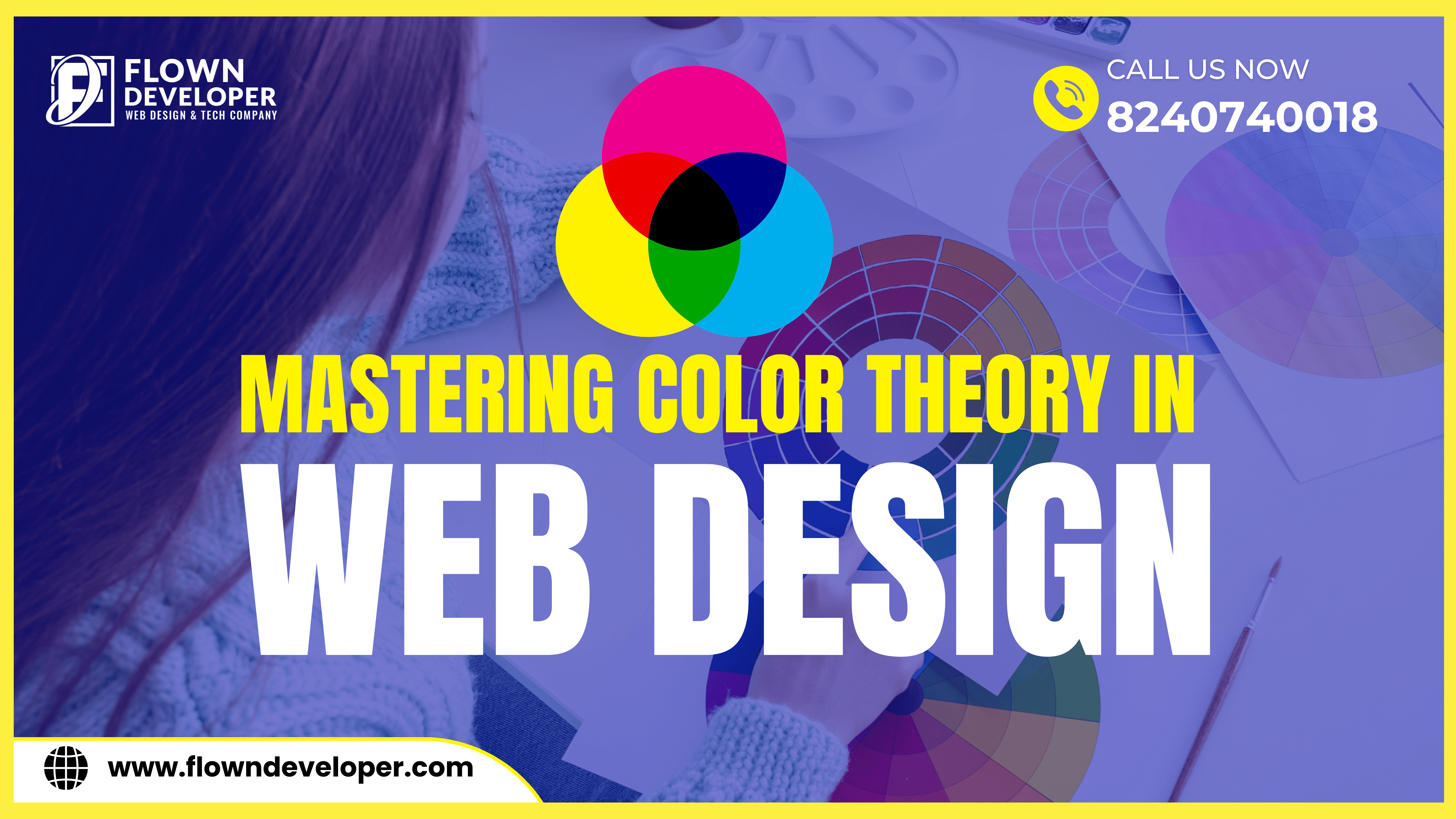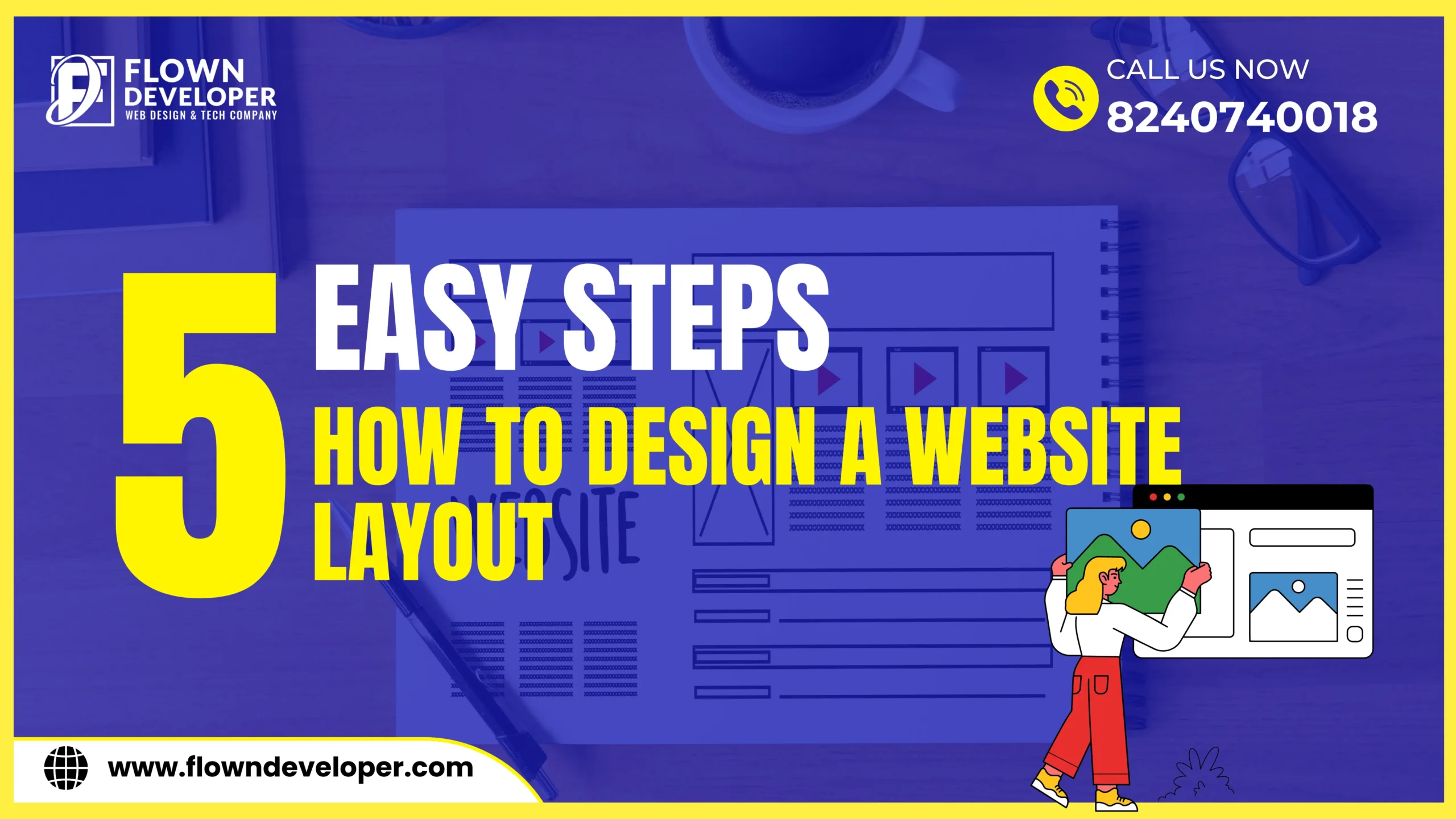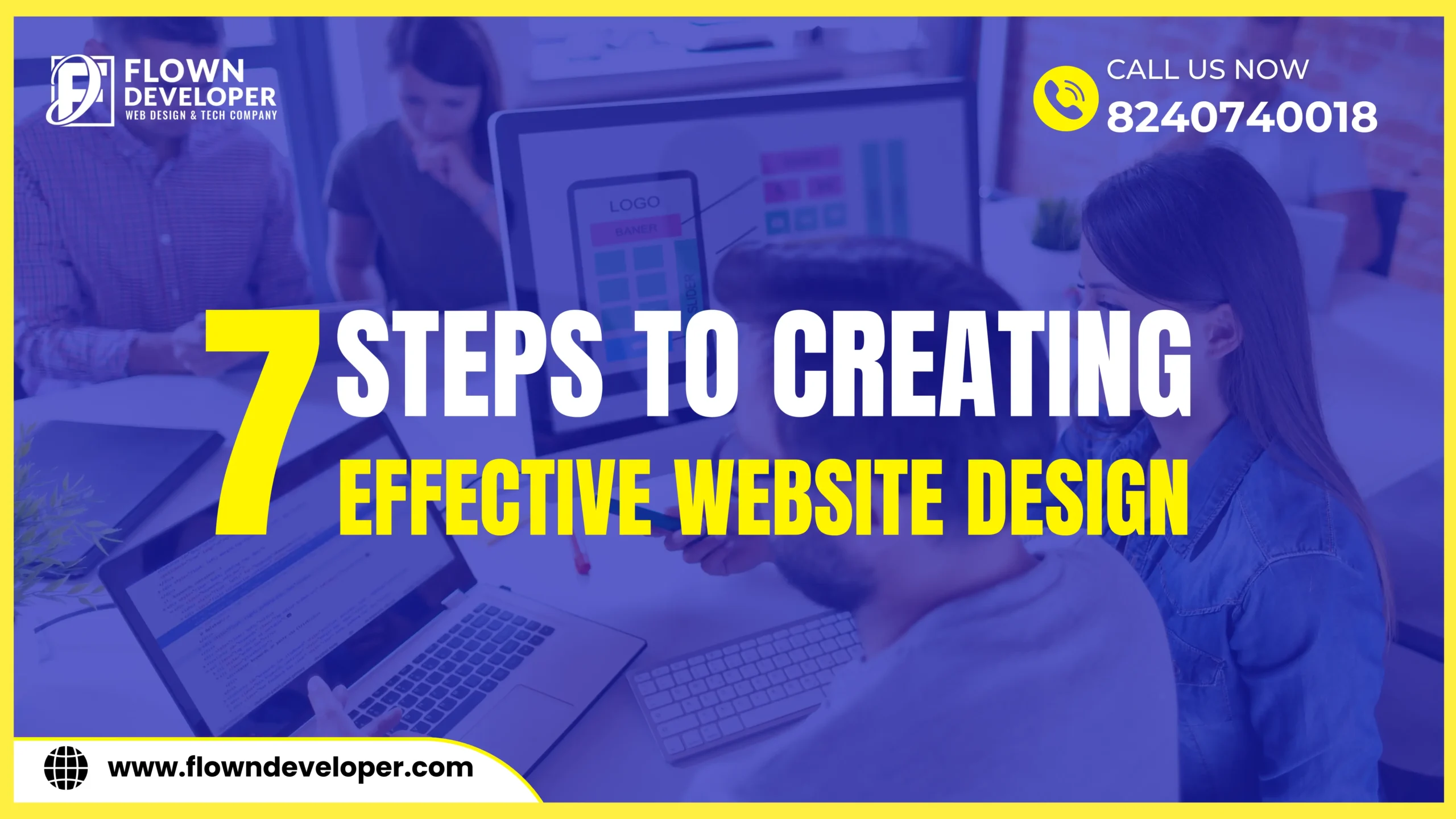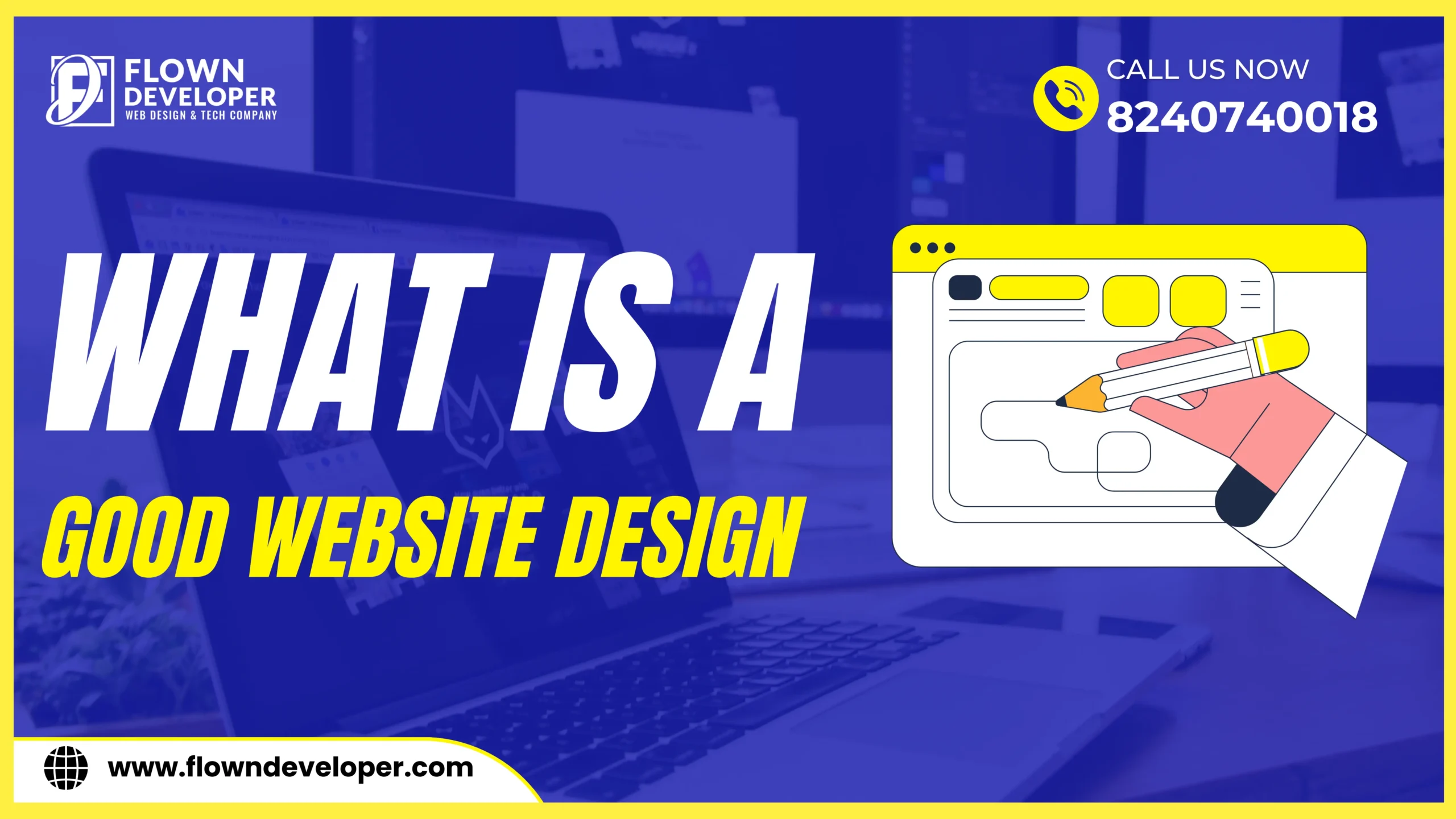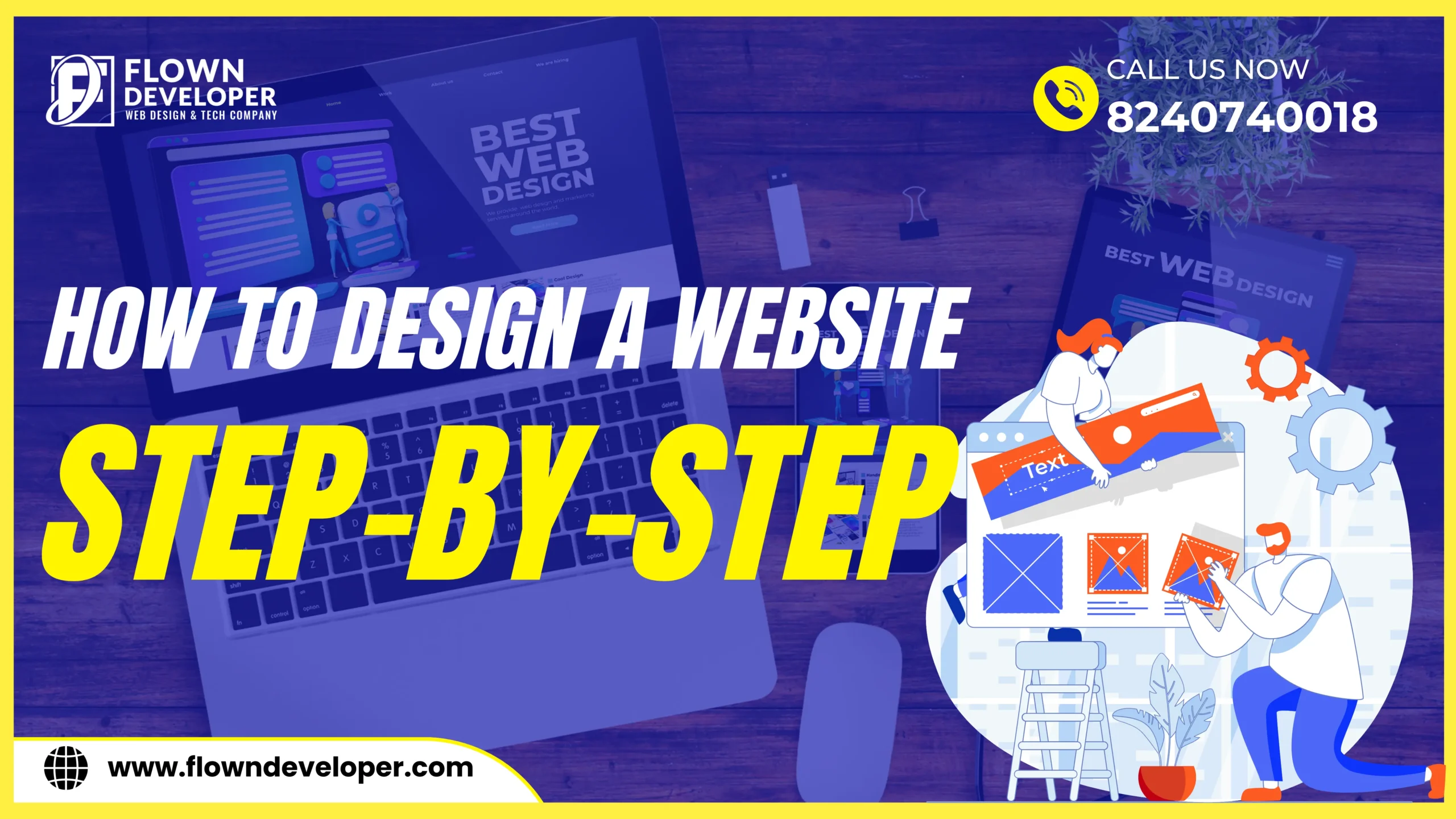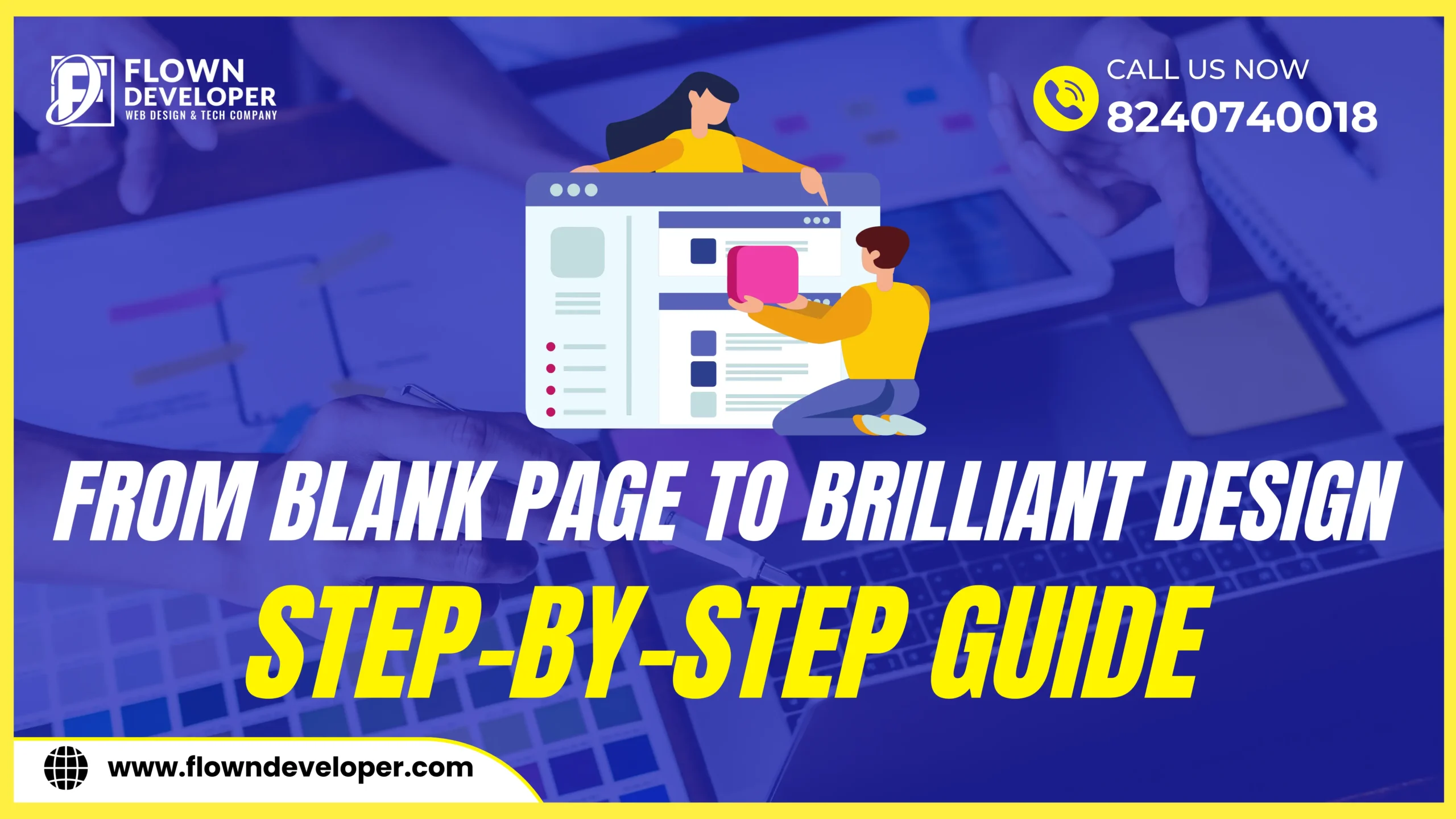Designing for Conversions: Maximizing User Engagement and Conversions
Introduction
Designing for conversions has become paramount for online success in the digital landscape, where user attention spans are shorter than ever.
Every website element influences user behavior, from its layout to its color scheme.
This comprehensive guide delves into the intricacies of designing for conversions, offering valuable insights and actionable tips to boost user engagement and ultimately drive conversions.
Understanding User Psychology
The Power of First Impressions
Users form an impression within seconds when they land on a website. Studies have shown that it takes about 50 milliseconds for users to form an opinion about a site’s visual appeal.
This underscores the importance of a clean, visually appealing design.
A clean and visually appealing design is crucial for a website because it directly impacts the user’s initial impression.
Within the first few seconds of landing on a website, users judge its credibility, trustworthiness, and professionalism based on its visual appeal.
Studies have revealed that it only takes about 50 milliseconds, or 0.05 seconds, for users to form an opinion about a site’s visual design. This means that users decide whether they like the design within a fraction of a second.
They may quickly abandon the site if the design fails to engage them or appears unprofessional.
A visually appealing design helps to establish a positive first impression and encourages users to continue exploring the website.
It creates a sense of trust and credibility, making users more willing to engage with the site’s content, products, or services.
To achieve a visually appealing design, some key elements to consider include:
1. Simplicity and clarity: Avoid cluttered layouts and prioritize a clean, structured design.
2. Consistency: Use consistent colors, typography, and visual elements throughout the website to create a cohesive experience.
3. Readability: Ensure that text is legible and uses appropriate font sizes and spacing.
4. Visual hierarchy: Use contrast, sizing, and spacing to prioritize essential elements and guide users’ attention.
5. Color scheme: Choose a visually pleasing color palette that complements the website’s purpose and brand identity.
6. Imagery: Use high-quality and relevant images or illustrations to enhance the look and feel.
7. Responsiveness: Optimize the design for different devices and screen sizes to maintain a visually appealing platform experience.
By prioritizing a clean and visually appealing design, website owners can significantly impact users’ favorable perception of their site, leading to better user engagement, longer visit durations, and increased chances of achieving their goals.
Navigability: Guiding Users Seamlessly
Intuitive navigation is the backbone of user-friendly design. Visitors should be able to find the information they seek effortlessly.
Clear and well-structured menus and strategic placement of CTAs (Call-to-Actions) can significantly enhance navigability.
Intuitive navigation is a design that allows users to understand and navigate a website or an application quickly.
It is crucial for providing a positive user experience and ensuring visitors can quickly and effortlessly find the information or tasks they seek.
A critical aspect of intuitive navigation is clear and well-structured menus.
The menu should be prominently placed and clearly labeled, making it easy for users to locate and access different sections or pages of the website.
The menu items should be logically organized, grouped under relevant categories, and presented in an easy-to-read and understandable way.
Strategic placement of CTAs is another crucial factor in enhancing navigability.
CTAs are typically buttons or links that prompt users to take specific actions, such as purchasing, signing up for a newsletter, or contacting the company.
Placing these CTAs in strategic locations throughout the website, such as at the end of an article or product page, can guide users toward the next step and help them navigate the site.
In addition to menus and CTAs, other elements that contribute to intuitive navigation include consistent and easy-to-understand labeling of links and buttons, precise and descriptive headings and subheadings, and a search function for users to search for specific content quickly.
By prioritizing intuitive navigation in design, website and application creators can ensure that users have a seamless and enjoyable experience while interacting with their products.
This can lead to increased user engagement, higher conversion rates, and a more successful online presence.
Utilizing Persuasive Design Elements
Incorporating persuasive elements like compelling headlines, persuasive copy, and strategically placed buttons can guide users toward desired actions.
A well-designed landing page can effectively lead visitors towards a conversion point. Persuasive elements guide users toward desired actions on a landing page.
Here are some ways in which these elements can be incorporated effectively:
1. Compelling Headlines: A strong headline grabs the user’s attention and entices them to continue reading. It should communicate the unique value proposition of the offered product or service.
2. Persuasive Copy: The copy should address the user’s pain points and demonstrate how the product or service can solve those issues. It should emphasize the benefits and outcomes users can expect.
3. Strategic Use of Buttons: Buttons should be strategically placed throughout the landing page to draw attention and encourage user interaction. They should be prominently displayed, contrasting against the background color, and use action-oriented text (e.g., “Get Started” or “Sign Up Now”).
4. Clear Call-to-Action: A clear and concise call-to-action (CTA) should be included at multiple points on the landing page. The CTA should be prominently displayed and communicate exactly what action the user needs to take, such as “Download Now” or “Request a Demo.”
5. Social Proof: Incorporating testimonials, case studies, or reviews from satisfied customers can help build trust and credibility. This social proof reassures users that they are making the right decision by taking the desired action.
6. Visuals: Engaging visuals, such as relevant images or videos, help capture the user’s attention and convey information more effectively than plain text. Visuals should be used strategically to enhance the persuasive message and promote engagement.
7. Scannable Content: Users often scan web pages instead of reading every word. Breaking the content into clear sections with subheadings, bullet points, and bold text helps users easily digest the information and maintain interest.
8. Urgency and FOMO (Fear of Missing Out): Including limited-time offers, countdown timers, or highlighting product scarcity can create a sense of urgency and encourage visitors to take immediate action.
9. Design and Layout: A clean and visually appealing design helps create a positive user experience. The landing page should have a clear information hierarchy, guiding the user’s attention towards the most essential elements.
Incorporating these persuasive elements thoughtfully can guide users toward the desired actions, increase conversion rates, and help achieve the goals of the landing page.
The Role of Visual Elements
The Psychology of Colors
Colors
evoke
emotions
and
can
significantly
impact
user
behavior.
Understanding
color
psychology
is
crucial
in
creating
a
website
that
resonates
with
the
target
audience.
For
example,
red
can
signify
urgency,
while
blue
may
convey
trust
and
reliability.
The
use
of
color
in
website
design
goes
beyond
aesthetics.
Colors
have
the
power
to
evoke
specific
emotions
and
influence
user
behavior.
By
understanding
color
psychology,
web
designers
can
strategically
choose
colors
that
resonate
with
their
target
audience
and
achieve
their
desired
objectives.
Red
is
a
color
that
often
symbolizes
urgency
and
can
create
a
sense
of
excitement
or
energy.
It
is
commonly
used
in
call-to-action
buttons
or
notifications
to
grab
users’
attention
and
encourage
immediate
action.
On
the
other
hand,
blue
is
frequently
associated
with
trust,
reliability,
and
calmness.
It
can
create
a
feeling
of
security
and
is
often
used
by
businesses
or
organizations
that
want
to
establish
a
sense
of
trustworthiness.
Other
colors,
such
as
green,
can
symbolize
growth,
nature,
or
health.
It
is
often
used
in
websites
related
to
environmental
or
sustainable
practices.
Orange
can
represent
creativity
and
enthusiasm,
while
purple
can
symbolize
luxury
and
royalty.
The
combination
of
colors
can
also
be
crucial
in
setting
the
overall
tone
of
a
website.
For
example,
warm
colors
like
red,
orange,
or
yellow
can
create
a
vibrant
and
energetic
atmosphere.
In
contrast,
cool
colors
like
blue,
green,
or
purple
can
establish
a
more
relaxed
and
soothing
ambiance.
It’s
essential
to
consider
cultural
and
personal
associations
with
colors
as
well.
Different
cultures
may
interpret
colors
differently,
and
individuals
may
have
personal
preferences
or
experiences
that
influence
their
response
to
specific
colors.
In
conclusion,
color
psychology
is
vital
in
web
design
as
it
can
evoke
specific
emotions
and
influence
user
behavior.
By
understanding
the
meanings
and
associations
of
different
colors,
web
designers
can
create
websites
that
resonate
with
their
target
audience,
convey
the
desired
messages,
and
achieve
their
objectives.
Optimizing Imagery for Impact
High-quality, relevant images enhance a website’s visual appeal and communicate brand values and messages.
Slow-loading or irrelevant images, on the other hand, can lead to high bounce rates.
When selecting images for a website, it is essential to choose high-quality visuals relevant to the site’s content and purpose.
High-quality images are visually appealing and capture visitors’ attention, making them more likely to stay on the site and explore further.
In addition to visual appeal, images can communicate brand values and messages.
A website can create a solid and consistent visual representation of the brand by selecting images that align with the brand’s identity, values, and target audience. For example, a website for a sustainable fashion brand may use images that showcase eco-friendly materials and production practices, reinforcing their commitment to sustainability.
On the other hand, slow-loading or irrelevant images can harm user experience and lead to high bounce rates.
Slow-loading images can frustrate visitors, especially those with slower internet connections, and may cause them to abandon the site before it fully loads.
Only relevant images that align with the content or purpose of the website can confuse or mislead visitors, leading to a lack of engagement and, ultimately, a higher bounce rate.
Therefore, choosing images carefully and optimizing them for web use is crucial to ensure they load quickly.
Compressing image files, using the appropriate file formats, and specifying image dimensions can all contribute to faster loading times.
Additionally, selecting images relevant to the website’s content and purpose helps create a cohesive and engaging user experience, ultimately reducing bounce rates and increasing user satisfaction.
Consistency in Typography
Consistent typography fonts readability and brand recognition.
Choosing appropriate fonts and maintaining consistency across the site helps establish a cohesive visual identity.
Consistency in typography refers to using the same font or a set of complementary fonts throughout a website or brand.
This consistency plays a significant role in enhancing readability and facilitating brand recognition.
Readability is crucial as it directly affects how easily users can consume the information on a website.
Choosing appropriate fonts that are legible and clear ensures that users can read the content effortlessly.
Fonts with clear letterforms and appropriate spacing between characters and lines can significantly enhance readability.
Consistent
typography
across
a
site
also
helps
users
navigate
and
understand
the
structure
and
hierarchy
of
information.
In
addition
to
readability,
consistent
typography
contributes
to
establishing
a
cohesive
visual
identity.
By using the same set of fonts or a harmonious combination of fonts across different sections of a website or different brand collateral, such as business cards or marketing materials, a brand can develop a recognizable and memorable visual identity.
Users can quickly associate that typography with a particular brand When they encounter consistent typography across different touchpoints, such as a website, social media accounts, or print materials.
This visual consistency helps reinforce brand recognition and builds trust among users or customers.
By carefully choosing appropriate fonts and maintaining consistency in typography, a brand can enhance readability and establish a solid and cohesive visual identity that fosters brand recognition.
Mobile Responsiveness and User Experience
The Mobile-First Approach
Given
the
prevalence
of
mobile
browsing,
a
mobile-first
approach
is
imperative.
A
website
not
optimized
for
mobile
devices
may
alienate
a
significant
portion
of
its
audience.
Mobile
browsing
has
become
increasingly
popular
in
recent
years,
with
many
internet
users
accessing
websites
through
their
mobile
devices.
This
shift
in
browsing
behavior
has
made
it
imperative
for
businesses
and
website
owners
to
adopt
a
mobile-first
approach
to
stay
relevant
and
reach
their
target
audience
effectively.
A
mobile-first
approach
means
designing
and
developing
a
website
with
the
mobile
user
experience
as
the
primary
focus.
This
approach
recognizes
that
most
visitors
will
access
the
website
through
a
mobile
device
and
ensures
that
the
site
is
optimized
for
smaller
screens,
touch
interactions,
and
slower
internet
connections.
Failure
to
optimize
a
website
for
mobile
devices
can
hurt
user
experience
and
ultimately
alienate
a
significant
portion
of
the
audience.
Users
who
encounter
a
mobile-friendly
website
may
need
help
with
navigation,
have
difficulty
reading
content,
or
experience
slow
loading
times.
These
issues
can
lead
to
frustration
and
a
high
bounce
rate,
where
users
quickly
leave
the
site
without
further
engagement.
In
addition
to
the
negative
impact
on
user
experience,
there
are
also
potential
SEO
implications
for
websites
that
need
to
be
mobile-friendly.
Search
engines
like
Google
prioritize
mobile-friendly
websites
in
their
search
results,
recognizing
that
they
provide
a
better
experience
for
mobile
users.
Therefore,
a
website
not
optimized
for
mobile
devices
may
need
to
improve
its
search
engine
rankings,
making
it
harder
for
potential
visitors
to
find
the
site.
Considering
the
prevalence
of
mobile
browsing
and
the
potential
negative
consequences
of
not
optimizing
for
mobile
devices,
it
is
clear
that
a
mobile-first
approach
is
crucial.
By
prioritizing
the
mobile
user
experience,
businesses
and
website
owners
can
ensure
that
they
are
connecting
with
their
audience
effectively
and
staying
competitive
in
the
digital
landscape.
Page Load Speed
A
slow-loading
website
can
lead
to
frustrated
users
and
higher
bounce
rates.
Optimizing
images,
minimizing
code,
and
leveraging
caching
techniques
are
essential
for
a
seamless
user
experience.
When
a
website
takes
a
long
time
to
load,
it
can
lead
to
frustrated
users
who
may
leave
it
before
it
even
loads.
This
results
in
higher
bounce
rates,
which
measure
how
many
visitors
leave
a
website
without
engaging
with
its
content.
To
avoid
this
detrimental
effect
on
user
experience
and
website
performance,
optimizing
various
aspects
of
a
website
is
crucial.
One
important
aspect
is
image
optimization.
Images
can
often
be
large
and
slow
to
load,
especially
if
they
need
to
be
properly
compressed.
By
resizing
and
compressing
images,
their
file
sizes
can
be
reduced
without
significantly
impacting
their
visual
quality.
Using
modern
image
formats
such
as
WebP
or
AVIF
can
also
optimize
loading
times.
Another
essential
optimization
technique
is
minimizing
code.
This
involves
reducing
the
amount
of
HTML,
CSS,
and
JavaScript
used
on
a
webpage.
Removing
unnecessary
code
and
optimizing
the
remaining
code
can
significantly
improve
loading
times.
Techniques
like
minification,
eliminating
unnecessary
characters,
and
whitespace
can
make
code
more
concise,
resulting
in
faster
load
times.
Caching
is
another
powerful
tool
for
optimizing
website
loading
speeds.
Caching
involves
storing
static
files,
such
as
images,
CSS,
and
JavaScript,
in
the
user’s
browser
or
a
content
delivery
network
(CDN).
This
way,
when
a
user
revisits
a
page,
these
static
files
can
be
retrieved
from
the
cache
instead
of
downloading
them
again,
leading
to
faster
load
times.
Caching
techniques
like
browser
caching
and
CDN
can
significantly
enhance
the
user
experience.
By
implementing
these
optimization
techniques,
websites
can
provide
a
seamless
user
experience,
reducing
frustration
and
minimizing
bounce
rates.
Users
are
more
likely
to
stay
engaged
and
explore
the
website
when
it
loads
quickly
and
smoothly,
leading
to
higher
conversion
rates
and
overall
success.
User-Friendly Forms
Forms are critical for capturing user information and driving conversions. Streamlining forms, minimizing fields, and providing clear instructions can lead to higher form submission rates. Some additional tips for improving form conversions include:
1. Use auto-fill: Enable features to help users save time and effort in entering their information. This can make the form submission process faster and more convenient.
2. Display progress indicators: If the form consists of multiple steps or sections, show users their progress through progress indicators. This helps users understand how much more they need to complete, reducing the chances of abandonment.
3. Provide real-time validation: Implement real-time form validation to detect errors or incomplete fields instantly. This allows users to correct mistakes immediately, reducing frustration and increasing the likelihood of successful submissions.
4. Optimize for mobile: Make sure the form is mobile-friendly and responsive, as many users access websites on their smartphones. Simplify the layout and use larger, touch-friendly input fields to enhance the mobile user experience.
5. Eliminate distractions: Remove any unnecessary links, buttons, or images that may divert users’ attention from the form. Minimize any elements that could be more crucial to completing the form to keep users focused.
6. Offer a clear call-to-action: Use a visually striking and descriptive call-to-action button text such as “Submit” or “Get Started” to communicate the following steps users must take. Ensure that the button stands out and is easy to locate.
7. Test and optimize: Monitor and analyze form submission rates and user feedback. Conduct A/B tests to compare different form variations and identify which elements and approaches yield the best conversion rates.
By implementing these strategies, you can optimize your forms to increase user engagement, streamline the submission process, and drive higher conversion rates.
Testing and Optimization
A/B Testing for Continuous Improvement
A/B
testing
allows
for
data-driven
decisions
by
comparing
different
versions
of
a
webpage.
Elements
like
headlines,
CTAs,
and
layout
can
be
fine-tuned
based
on
user
behavior.
A/B
testing
involves
comparing
two
webpage
versions
(A
and
B)
to
determine
which
performs
better.
It
allows
for
data-driven
decisions
because
it
collects
user
behavior
data
and
statistically
analyzes
the
results.
By
making
small
changes
to
elements
like
headlines,
CTAs
(call-to-action),
or
layout,
companies
can
test
these
variations’
impact
on
user
engagement,
conversion
rates,
or
other
metrics
of
interest.
For
example,
a
company
may
create
two
versions
of
a
landing
page
with
different
headlines
and
track
how
many
visitors
click
the
call-to-action
button.
Splitting
the
traffic
and
randomly
showing
visitors
either
version
A
or
B
makes
it
possible
to
compare
the
performance
of
the
two
variations.
Statistical
analysis
can
then
reveal
whether
there
is
a
significant
difference
in
performance
between
the
versions.
Companies
can
make
data-driven
decisions
and
fine-tune
their
webpage
elements
based
on
the
data
collected.
They
can
choose
the
variation
that
leads
to
better
conversion
rates,
higher
engagement,
or
other
desired
outcomes.
A/B
testing
empowers
businesses
to
optimize
their
web
pages
based
on
actual
user
behavior
rather
than
relying
on
assumptions
or
opinions.
Analyzing User Feedback
Listening
to
user
feedback
provides
invaluable
insights
into
pain
points
and
areas
for
improvement.
Tools
like
heatmaps
and
user
surveys
can
illuminate
user
behavior
and
preferences.
By
analyzing
heatmaps,
businesses
can
see
where
users
click,
scroll,
and
spend
the
most
time
on
a
webpage.
This
information
helps
identify
what
elements
attract
attention
and
what
areas
may
be
overlooked.
Heatmaps
can
also
reveal
usability
issues,
such
as
confusing
navigation
or
problematic
areas,
causing
users
to
abandon
the
website.
User
surveys
are
another
effective
tool
for
collecting
feedback.
They
allow
businesses
to
gather
users’
opinions,
preferences,
and
suggestions
directly.
Surveys
can
uncover
pain
points,
highlight
areas
for
improvement,
and
provide
insights
into
user
needs
and
expectations.
Listening
to
feedback
from
users
is
crucial
for
improving
the
overall
user
experience.
This
feedback
can
then
be
used
to
make
informed
decisions
about
website
design,
content,
navigation,
or
other
areas
needing
optimization.
Ultimately,
this
leads
to
a
better
user
experience,
increased
customer
satisfaction,
and
improved
business
outcomes.
Conclusion
Designing for conversions is a multifaceted process that requires a deep understanding of user behavior and meticulous attention to detail. A website can transform visitors into loyal customers by prioritizing user experience, leveraging persuasive design elements, and staying attuned to evolving trends. Remember, the key lies in creating a seamless and compelling user journey.


